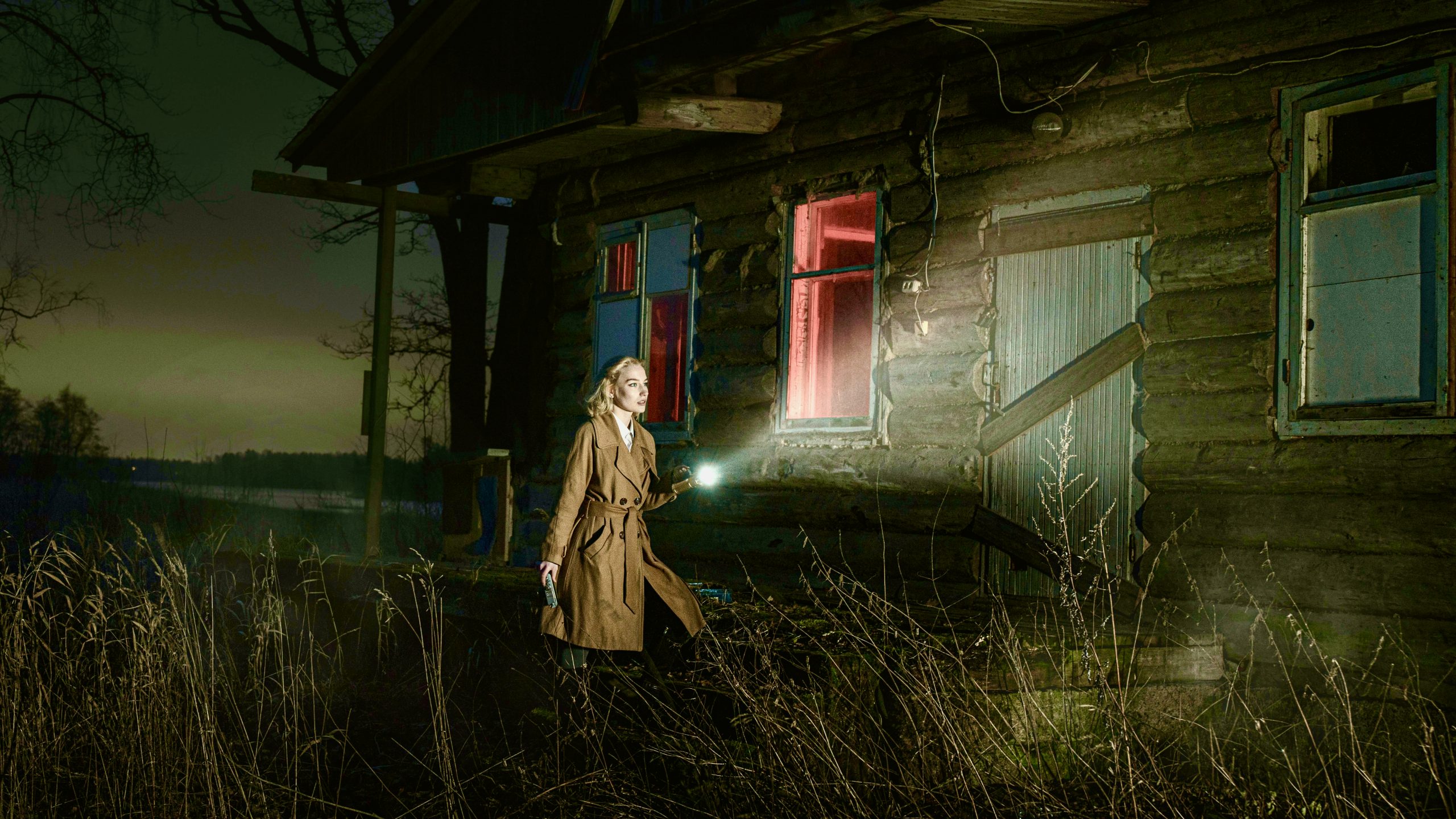Books & Culture
Miss Marple vs. the Mansplainers: Agatha Christie’s Feminist Detective Hero

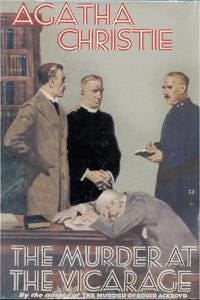
By 1960, Agatha Christie was apparently exhausted with male know-it-alls. She had grown to despise her most famous detective, Hercule Poirot, whom she described as “an egocentric creep.” But her readers had loved the high maintenance Poirot since his first appearance in 1920 — his perfectly groomed moustache, his patent leather shoes, his delicate stomach — so much that he was the only fictional character ever to receive an obituary in the New York Times. It must have been a relief for Christie, in novels starting with The Murder at the Vicarage in 1930, to write about Miss Marple, her little old lady heroine, whose quiet expertise in the comings and goings of village life and the universality of human nature made her an unlikely master detective. She said that Miss Marple and Poirot never solved a mystery together because “Poirot, a complete egoist, would not like being taught his business or having suggestions made to him by an elderly spinster lady.”
Most men don’t, but the twinkling irony with which Miss Marple nudges blustering, blowhard cops in the right direction demonstrates how the Queen of Crime inherited just as much from Jane Austen as Arthur Conan Doyle, employing the sly humor that is a hallmark of British domestic fiction. Christie’s Miss Marple mysteries are ones in which female news and knowledge are vindicated, throwing a smiling side eye at mansplanations and male authorities. Miss Marple’s wisdom is overtly feminine — she relies on her knowledge of the domestic sphere, of relationships — and her methods are equally so, as she exercises her keen women’s intuition. “Intuition,” she says, “is like reading a word without having to spell it out.”
Miss Marple nudges blustering, blowhard cops in the right direction, demonstrating how the Queen of Crime inherited just as much from Jane Austen as Arthur Conan Doyle
Miss Marple elevates the archetype of the spinster, which has been, as Kathy Mezei writes, “a recurring icon in British literature.” This phenomenon reflects a reality of British demographics, particularly after the traumas of two world wars: women outnumbered men, and single women were seen as “lonely, superfluous, and sexually frustrated.” Mezei’s wonderful article “Spinsters, Surveillance, and Speech: The Case of Miss Marple, Miss Mole, and Miss Jekyll” from the Journal of Modern Literature lays out the way that a spinster character has been used by Christie and others to accomplish feats of narrative misdirection, and, more importantly, to “covertly query power and gender relations while simultaneously upholding the status quo.”
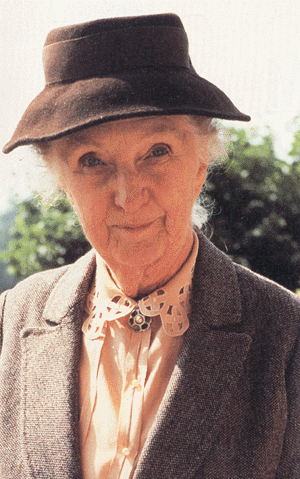
Joan Hickson as Miss Marple
The brilliance of Christie’s deployment of Miss Marple is that she does not turn away from the spinster stereotype. We all know it: old, unmarried women are lonely, nosy, and spend their days eavesdropping and passing judgment. And it is just her apparent superfluousness, the ease with which she may observe society, unnoticed and unimportant, that perfectly situates the spinster to pick up on clues and intrigue. Miss Marple’s ambiguous position in domestic life, neither completely inside or outside the village families she observes, is where she gains her peculiar power to steer Christie’s stories: as Mezei’s mindblower of a sentence puts it, “[the spinster’s] narrative function, in representing the dialectic between seeing and being seen, omniscience and invisibility, often mirrors the ambiguous and hidden role of the author/narrator in relation to his/her characters.”
In this way, Miss Marple is never our narrator, nor does she provide the primary point of view for any of Christie’s novels. Christie’s mysteries only work in so far as they, as Mezei writes, “adroitly distort the reader’s and the characters’ angle of perception” — casting suspicion in every direction, manufacturing red herrings, following dead ends. Like all great magicians, Christie’s skill was sleight of hand, controlling her readers’ attention by flourishing the left hand while manipulating the cards with the right. Miss Marple acts as a guide in the story, or even as a fairy godmother or deus ex machina, reappearing periodically to right the investigation’s course and “readjust the focus of our gaze.”
Like all great magicians, Christie’s skill was sleight of hand, controlling her readers’ attention by flourishing the left hand while manipulating the cards with the right.
Of course, this sleight of hand has always been what Christie’s critics have complained about: that she eliminates “human interest,” as Edmund Wilson wrote in 1944, in favor of “the puzzle.” Wilson’s companion pieces “Why Do People Read Mystery Novels” and “Who Cares Who Killed Roger Ackroyd?” are masterpieces of vintage trolling, baiting readers by writing of the mystery, “As a department of imaginative writing, it looks to me completely dead,” and claiming that he grew out of detective stories by the age of twelve.
These pieces also seem to be opportunities for Wilson to covertly criticize female writers and concerns. The few writers whom he mildly praises, like Rex Stout and John Dickson Carr, are men; he criticizes Dashiell Hammett but seems to reserve the height of his asperity for the women who were at the vanguard of “the Golden Age of Detective Fiction.” He writes that Ngaio Marsh’s writing is not “prose at all except in the sense that distinguishes prose from verse;” of Christie he writes, “Her writing is of a mawkishness and banality which seem to me literally impossible to read;” of Dorothy Sayers, “She does not write very well;” of Margery Allingham, “The story and the writing both showed a surface so wooden and dead that I could not keep my mind on the page.”
The legendary crime writer Raymond Chandler wrote a response to Wilson’s first piece with his essay “The Simple Art of Murder,” effectively a defense of Hammett and a further heaping on of scorn for traditional English detective novels. He expands on Wilson’s critique of “the puzzle,” writing that the skills that contribute to artful writing and those that create a clever mystery are incompatible. “The fellow who can write you a vivid and colorful prose simply won’t be bothered with the coolie labor of breaking down unbreakable alibis,” he writes. “The master of rare knowledge is living psychologically in the age of the hoop skirt.”
But buried in these criticisms is an implicit statement about what kind of human beings make authentic characters and which reality is worthy of realism. Wilson writes that he skipped many sections of “conversations between conventional English village characters” in the books of the writers he refers to as “these ladies,” while heralding Chandler’s Farewell, My Lovely as a “novel of adventure.” Chandler says of the jaunty amateur detective in a Dorothy Sayers novel, “The English police seem to endure him with their customary stoicism; but I shudder to think of what the boys down at the Homicide Bureau in my city would do to him.” The “domestication of crime” that came with the rise of Christie and her cohort was necessarily a feminization of crime, and that emasculation is what Wilson and Chandler are writing against — Wilson goes so far as to say that Chandler is not a detective novelist at all; his writing is more allied with the spy stories of Graham Greene.
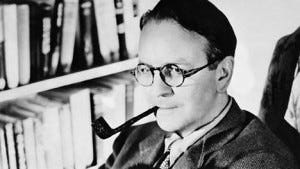
Raymond Chandler
Chandler’s essay blames the enfeebling gentility of the detective story on the genre’s readers: he repeatedly characterizes them as “old ladies” who “like their murders scented with magnolia blossoms and do not care to be reminded that murder is an act of infinite cruelty.” In Chandler’s scheme, what Hammett and his “tough-minded” ilk brought to the detective story was a bracing, and specifically masculine, morality. “Hammett gave murder back to the kind of people that commit it for reasons,” Chandler writes, “not just to provide a corpse.” Then the only valid crime writing is tough guys writing about tough guys killing other tough guys. But one forgets, as Miss Marple says, “One does see so much evil in a village.” Or more to the point, as Miss Marple also says, “Clever young men know so little of life.”
The noir stories of Chandler and Hammett are about the malignant effects of a decaying, corrupt institution: the American city. Village mysteries are about the same, but their focus is tighter: the traditional family and its domineering patriarch. “This apparent example of English nostalgia,” Mezei writes of the Golden Age mystery, “has exposed one odd and dysfunctional household after another.” The secret subversion in this genre comes, as Mezei points out, as these mysteries explore not a threat to the status quo from the outside — chaos invading the otherwise orderly home — but from the inside. Their focus is on what is hidden, on secret identities, on the disorder and resentment that already exists within every family. Mezei quotes from Alison Light that Christie was “an iconoclast whose monitoring of the plots of family life aims to upset the Victorian image of home, sweet home.”
This “Victorian” connection is an interesting one: Miss Marple is often characterized as a Victorian because of her conservatism and her views of good and evil, but also the darkness and suspicion of her mind. “A mind like a sink, I should think,” one character says of her. “A real Victorian type.” Christie was also a real Victorian type. She was engaged by Victorian crazes like the one for travel and exotica — she was one of the first British people to surf standing up on Waikiki. Her mother believed she could talk to the dead, and when Christie famously went missing for eleven days in 1926, Sir Arthur Conan Doyle used a medium to search for her, continuing the Victorian mania for spiritualism.
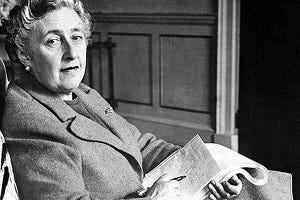
Agatha Christie
Conan Doyle and Wilkie Collins were her literary heroes, as well they might be; after all, Edmund Wilson made the bold declaration that “the detective story proper had borne all its finest fruits by the end of the nineteenth century.” Collins’ The Woman in White was one of the earliest “detective novels,” and when it became the most popular book in England in 1859, reviewers leveled similar criticisms at it as Wilson did at Christie. “Our curiosity once satisfied, the charm is gone,” one reviewer wrote of the mystery in Collins’ novel. Even in the embryo days of the detective story, critics were weary of the formula, the puzzle, the sleight of hand that twists and turns our attention. But The Woman in White was a novel which innovated by borrowing from journalism, playing on the British public’s growing fascination with lurid court cases, as they devoured accounts of poisoning, bigamy, and false imprisonment. We think of the Victorian era as a time of repression and suffocating tradition, but it was also the time of a steadily germinating modernity. A population with dual preoccupations with “home, sweet home” and with salacious crime stories: who else could that beget than Agatha Christie, and all her brothers and sisters writing what we sneeringly refer to as “popular” fiction, genre fiction, airport fiction?
All our criticisms of genre fiction — that it relies too much on the sensationalism of a shocking plot; that it is unwieldy and messy; that it is too contemporary, resisting the classic’s tight-lipped timelessness; that it appeals too much to its audience’s emotions — sidestep the fact that the novel began as a popular form, one as potentially mind-rotting as TV, comic books, or Candy Crush. And it was never more so than in the Victorian era, when Charles Dickens published his own and others’ novels (including The Woman in White) in serial form, swaying with his audience’s desires. Those writers were shocking and suspenseful and sentimental and funny — they gave the people what they wanted. And if popular fiction is too formulaic, then we should tell that to Shakespeare the next time he writes about a Duke disguising himself to entrap his evil brother.
the novel began as a popular form, one as potentially mind-rotting as TV, comic books, or Candy Crush.
Shakespeare is our most enduring example of English popular fiction, and in his weaker moments he was just as messy and repetitive and the rest. Christie was a Shakespeare devotee — her only daughter was named Rosalind, after the heroine of As You Like It. In the 1950 Miss Marple novel A Murder is Announced, an unexpectedly sensitive policeman muses to himself that one of the characters would make a good Rosalind, and this sets the tone for the madcap novel, with multiple cases of mistaken identity, twins separated at birth, and even, in proper Shakespearean style, ending with a wedding.
Framing Christie’s novels as Shakespearean comedies is a fun thought experiment — I suppose we shouldn’t be surprised that arguably the most popular novelist of all time (her books have sold two billion copies worldwide) is often funny. And she used comedic techniques passed down from Shakespeare and the Victorians — being too current, too meta, too cute — to sweetly barb back at her detractors. In A Murder is Announced, Miss Marple talks about reading Hammett’s stories. “I understand from my nephew Raymond that he is at the top of the tree in what is called the ‘tough’ style of literature,” she says, winkingly paraphrasing Chandler’s critique of the English mystery, of characters like herself. Miss Marple was Christie’s way of further feminizing an already feminine genre, of doubling down on her mysteries by old ladies about old ladies for old ladies.







